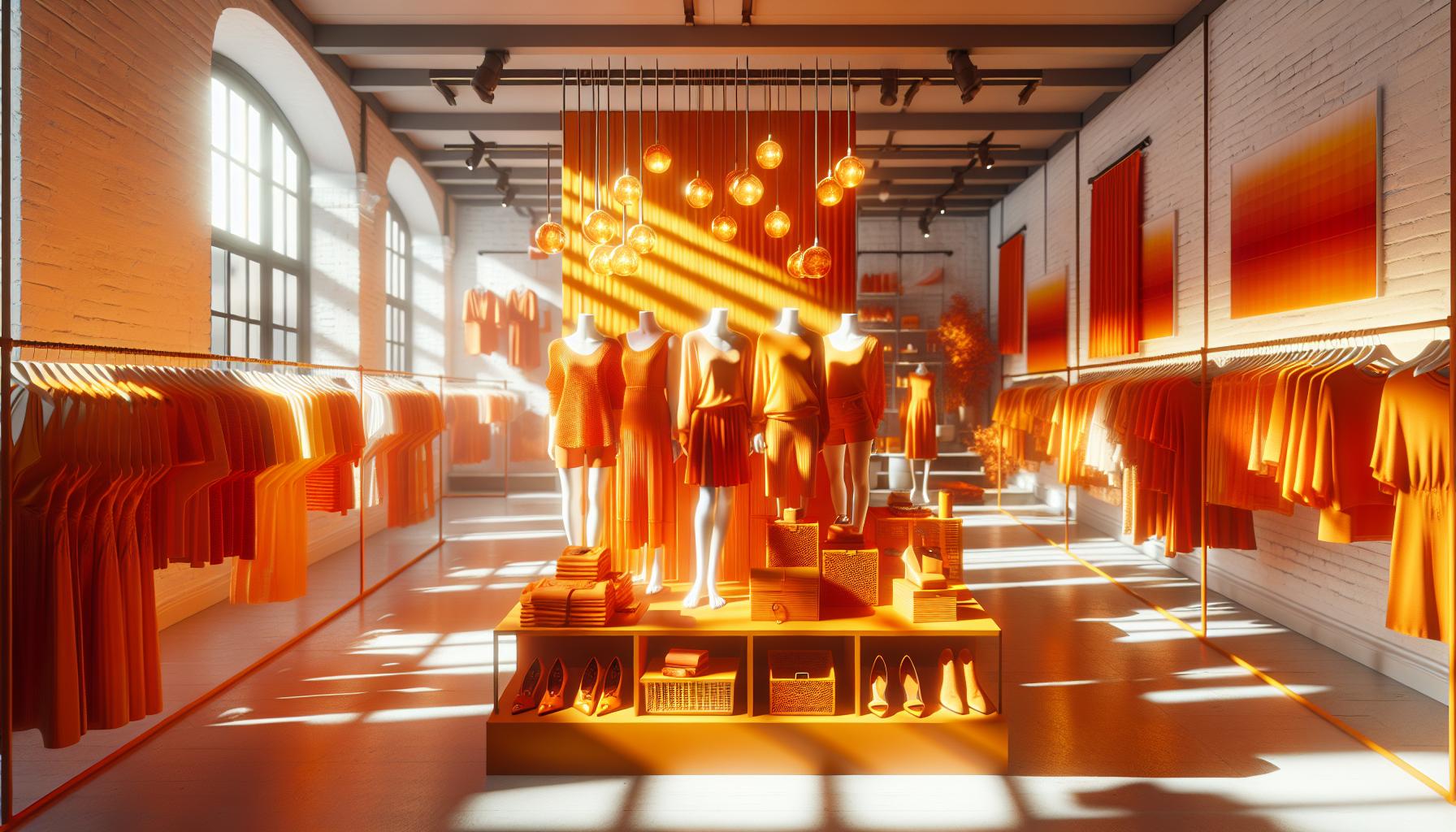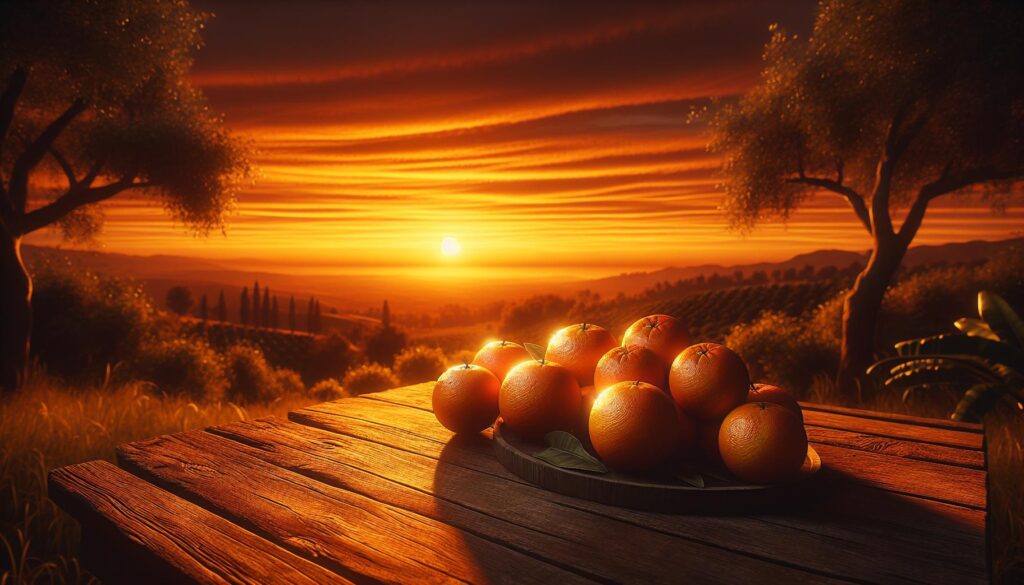Orange is more than just a color; it’s a vibrant expression of energy and warmth that can transform any space. I’ve always been fascinated by how this lively hue can evoke feelings of enthusiasm and creativity. Whether it’s the glow of a sunset or the zest of a ripe orange, this color captures attention and sparks joy in our lives.
In design and fashion, orange stands out as a bold choice that can either complement or dominate a palette. It’s versatile enough to be used in various contexts, from playful accents to sophisticated statements. Join me as I explore the captivating world of orange, uncovering its significance, psychological effects, and how it can elevate our everyday experiences.
Key Takeaways
- Vibrant Energy: Orange combines the intensity of red and the brightness of yellow, creating a stimulating and energetic hue that captures attention and evokes positivity.
- Psychological Impact: The color orange is associated with enthusiasm, warmth, and creativity, often fostering sociability and stimulating appetite in various settings.
- Design Versatility: In interior design and fashion, orange can be used as a bold statement or a complementary accent, enhancing mood and transforming spaces.
- Brand Appeal: Companies leverage orange in branding and marketing to convey excitement and friendliness, effectively driving customer engagement and impulse buying.
- Current Trends: Orange remains popular across industries, from fashion and interior design to graphic design and culinary trends, reflecting its enduring relevance and appeal.
- Natural Inspiration: Elements found in nature, such as sunsets and autumn leaves, reinforce orange’s association with warmth, energy, and beauty.
Color:Z5H7B7CIUWS= Orange
Color:Z5H7B7CIUWS= orange stands out for its vibrant and energetic qualities. This hue blends the warmth of red with the cheerfulness of yellow, creating a stimulating visual experience. Orange stimulates enthusiasm and creativity, making it a popular choice in various applications, from interior design to branding.
In design, orange serves multiple roles, whether as a bold accent or the dominant shade in a palette. The psychological effects of orange include increased sociability and positivity. Many brands utilize orange to convey a sense of excitement, encouraging engagement and interaction.
Nature exemplifies the beauty of orange through elements like sunsets, autumn leaves, and ripe citrus fruits. These natural instances reinforce orange’s association with energy and warmth. The color can transform a space, enhancing mood and fostering creativity, making it a valuable addition to any design scheme.
Exploring Color:Z5H7B7CIUWS= orange reveals its potential to elevate environments and evoke positive emotions. Its versatility ensures it remains a favorite in both fashion and design.
Characteristics of Color:Z5H7B7CIUWS= Orange

Orange possesses distinctive characteristics that contribute to its captivating appeal in various contexts. I find its vibrant and warm nature especially compelling in both design and psychology.
Visual Properties
Orange combines red’s intensity with yellow’s brightness, creating a bold and eye-catching hue. This blend results in a range of shades from light peach to deep copper. I notice that in design applications, orange pairs well with complementary colors like blue, enhancing its vibrancy. Its luminosity ensures it stands out in both digital and physical spaces, making it a popular choice for attention-grabbing elements like logos and marketing materials. In nature, orange manifests in vivid sunsets and autumn leaves, showcasing its inherent vibrancy.
Psychological Effects
Orange elicits strong emotional responses, often triggering feelings of enthusiasm, creativity, and warmth. I observe that spaces painted in orange can foster a sense of sociability and energy, ideal for settings like gathering places or creative workspaces. Research indicates that orange can stimulate appetite and conversation, making it a frequent choice in restaurants and cafes. The psychological associations with orange can enhance mood and motivate action, demonstrating its effectiveness in branding strategies aimed at igniting excitement and engagement.
Applications of Color:Z5H7B7CIUWS= Orange

Orange finds extensive use across various fields due to its vibrant and energetic qualities. Its applications in branding, marketing, and interior design illustrate its ability to evoke strong emotional responses.
Branding and Marketing
Orange stands out in branding, often representing enthusiasm, creativity, and warmth. Companies like Fanta and Home Depot utilize this color to capture attention and convey a friendly image. Its visibility ensures that marketing materials using orange resonate with a wide audience.
Research shows that orange can stimulate impulse buying, making it effective in consumer environments. This color not only enhances logos but also appears on packaging and advertising, creating an inviting atmosphere that encourages engagement. Marketers often pair orange with text that conveys action, leading to higher conversion rates.
Interior Design
In interior design, orange adds vibrancy and energy to spaces. It’s commonly used in kitchens and dining areas, where it can boost appetite and conversation. Choosing lighter shades such as peach creates a welcoming atmosphere, while deeper shades like burnt orange add warmth and richness.
Designers incorporate orange in accent pieces like cushions, artwork, or wall paint to create focal points. Orange pairs effectively with neutral colors, grounding its lively nature while maintaining a modern aesthetic. In open spaces, orange reinforces social interactions, making it suitable for both homes and public areas.
Trends in Color:Z5H7B7CIUWS= Orange

Orange continues to trend in various industries, signifying energy and positivity.
- Fashion Industry: In the fashion realm, orange is a prominent choice for seasonal collections, especially during spring and summer. Designers incorporate vibrant shades in clothing, accessories, and footwear, appealing to consumers seeking bold expressions.
- Interior Design: Within interior design, orange creates inviting spaces. Popular trends include painting accent walls in shades like terracotta and peach, enhancing warmth. Designers frequently incorporate orange through furnishings and décor to create a lively atmosphere, particularly in social spaces.
- Branding and Marketing: Companies leverage orange in branding to evoke enthusiasm. Brands such as Nickelodeon and Amazon utilize orange in logos and advertising, fostering a sense of approachability. The effectiveness of orange prompts businesses to use it in promotional materials, aiming to capture customer attention.
- Graphic Design: In graphic design, orange serves as a focal point. It draws attention in web designs and marketing materials. Designers often pair orange with contrasting colors, utilizing its vibrancy to enhance visual appeal and engagement.
- Culinary Trends: Orange flavors, exemplified by citrus fruits, influence food presentation and menu design. Restaurants use orange in dishes and decor to create a warm dining experience, encouraging interaction and enjoyment.
The prevalence of orange across these sectors illustrates its sustained relevance and appeal, reflecting its ability to energize and inspire.
Conclusion
Embracing the color orange can truly transform any space or experience. Its vibrant energy and warmth resonate in various aspects of life from design to branding. I’ve seen firsthand how orange can foster creativity and sociability in both personal and professional environments.
Whether it’s a splash of orange in a room or a bold logo, this color captures attention and evokes positive emotions. I encourage you to explore the possibilities that orange offers. By incorporating it into your life or projects, you can create inviting atmospheres that inspire enthusiasm and connection.

